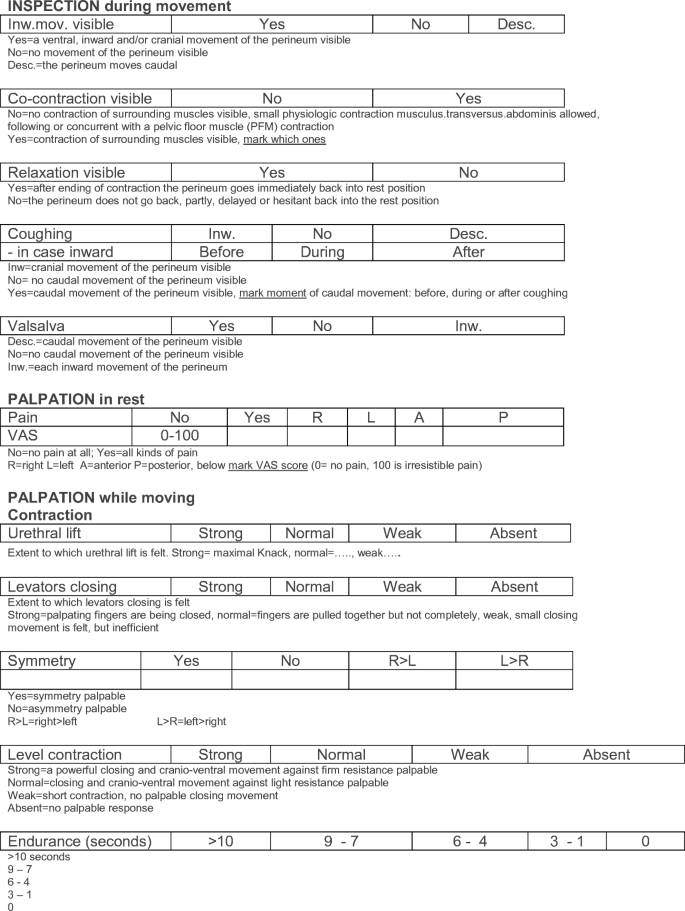To develop a digital technique to assess pelvic floor muscles pfm.
Pelvic floor strength scale.
To translate the assessment into an exercise based regimen.
American society of colon and rectal surgeons.
They are made up of both type i slow twitch and type ii fast twitch fibers.
Several studies with small numbers of subjects have shown that women with urinary incontinence have decreased pfm thickness 1 2 decreased pfm electromyographic activity 3 and less muscle strength 4 5 force generating capacity compared with control subjects.
The pelvic floor muscles pfm consist of approximately 70 slow twitch type 1 and 30 fast twitch type 2 muscle fibres gilpin et al 1989.
The pelvic floor also called the pelvic diaphragm is a bowl shaped muscular sheet whose main functions are to support the abdominal and pelvic organs and to control the opening and closing of the urethral and anal sphinters.
The pelvic floor muscles are known as the levator ani made up of the pubococcygeus puborectalis complex those muscles form a sling around the anorectal junction.
It has been demonstrated that the weakness of the pfm is significantly higher in incontinent women 3 4 and also that this weakness is worse in women with urge urinary incontinence 5.
Sitting on the floor with your back supported prop.
Changes in their function and strength can contribute to pelvic floor dysfunction such as urinary or faecal incontinence pelvic organ prolapse and pelvic pain.
The pelvic floor muscles pfms are considered important in maintaining pelvic organ support and bowel and bladder continence.
Pelvic floor dysfunction expanded version.
This is the easiest way to examine your pelvic floor muscles.
Damage to the pelvic floor muscle pfm can decrease the muscle strength and consequently could result in urinary and fecal incontinence.
The pfm form the floor of the pelvic basin and help maintain continence by actively supporting the pelvic organs and closing the pelvic openings with their anterior and cephalad action when contracting.
To validate the technique and test for validity and reliability.
The majority are type i about 70 which provide sustained support and are fatigue resistant.
17 the pfm comprise the pelvic diaphragm muscles pubococcygeus puborectalis and iliococcygeus together known as the levator ani which can.
The pelvic floor muscles pfm are found in the base of the pelvis.
International foundation for functional gastrointestinal disorders.
As you perform each exercise jot down your perceived level of strength on a scale from 1 10 with 1 being the weakest and 10 being the strongest.
3 the pelvic floor rests at the bottom of the pelvis and is formed mainly by the levator ani muscle group.

